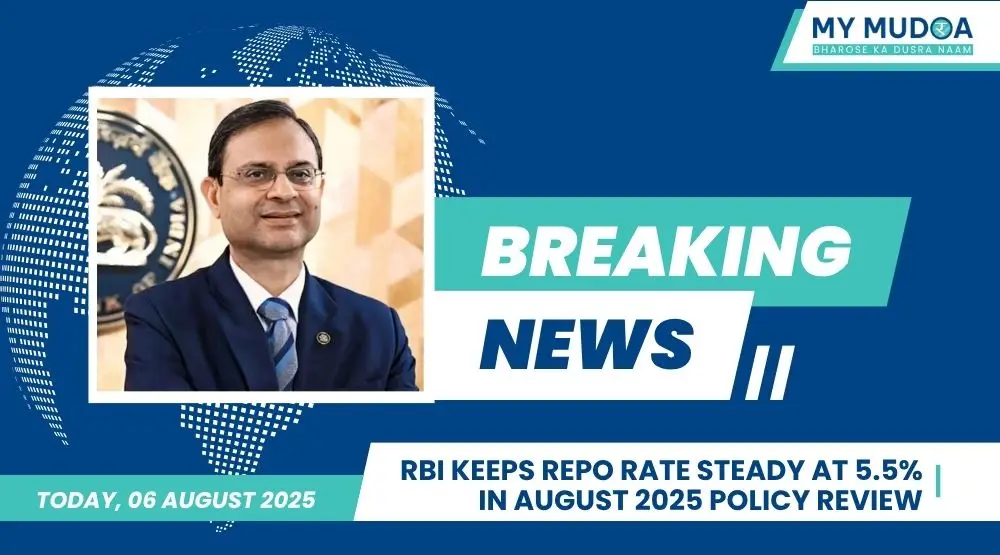
In its latest monetary policy meeting held from August 4–6, the Reserve Bank of India (RBI) decided to keep the repo rate unchanged at 5.5%. This marks a pause after 100 basis points of rate cuts since February 2025.
RBI Governor Sanjay Malhotra explained that the central bank is maintaining a neutral stance, meaning it will adjust interest rates based on how inflation and growth play out in the coming months.
What is the Repo Rate?
It is the interest rate at which the RBI lends money to commercial banks. It directly affects loan and deposit interest rates for consumers.
The central bank has revised its inflation projection for the current financial year down to 3.1%, from the earlier estimate of 3.7%. This revision comes amid easing food prices and strong domestic supply.
“Almost half of India’s inflation is driven by food items, which aren’t directly affected by global events,”
said RBI Deputy Governor Poonam Gupta.
The RBI has kept its GDP growth forecast at 6.5% for FY26. Despite global uncertainty, rural demand, public investment, and steady inflation are expected to support economic activity.
For home loan borrowers, this means no change in EMIs for now. Many in the real estate sector have welcomed the decision, saying steady borrowing costs will help maintain buyer confidence—especially in the affordable and mid-income housing segments.
“The RBI’s move supports affordability and helps buyers plan better,”
said Prashant Sharma, President, NAREDCO Maharashtra.
Responding to concerns over rising US tariffs, Governor Malhotra said:
“We don’t expect a major impact on India’s economy unless there are retaliatory tariffs. Inflation in India is mostly driven by domestic factors.”
With the repo rate steady and inflation easing, RBI’s policy is aimed at balancing growth with price stability. For borrowers, the environment remains favorable. For depositors, this might be the time to lock in FD rates, as softer returns could follow.
Follow Us On